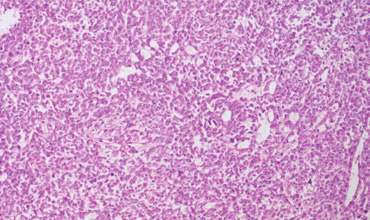A Study Of The Predisposing Factors To Vesico-Vaginal Fistula In Women Of Ebonyi Local Government Area Of Ebonyi State

Abstract:
Vesico-vaginal fistula is an
abnormal hole between the urinary bladder and the vagina leading to involuntary
discharge of urine into the vagina. Vesico-vaginal fistula still remains one of
the main morbidities of childbirth in developing world and Ebonyi Local
Government Area of Ebonyi State is a typical example.
The study was aimed at
identifying those predisposing factors to VVF in women of Ebonyi local
government area of Ebonyi State. It is a cross-sectional descriptive community
based study and a total of 386 women of child bearing age were assessed using
interviewer administered questionnaires.
The study revealed that 80% (309)
of the studied population were aware of VVF. The study also revealed that the
predisposing factors to VVF were influenced by one’s level of education and
employment status as both variables were statistically significant. Level of
education and employment status were directly proportional to one’s knowledge
and inversely proportional to those predisposing factors to the development of
VVF.
In conclusion, major breakthrough
is still needed in order to get the women of Ebonyi Local Government Area of
Ebonyi State to actually know about VVF and those predisposing factors for the
development of VVF. To decrease those predisposing factors that can lead to
VVF; the study suggested advocacy, health education, economic empowerment of
women, girl child education and improving the socio-economic status of women as
tools to bringing the desired change.
References:
[1]
Calle, A. 1992 unpublished. Fistula de origenobstetrico. Quito, Ecuador.
[2] Edström, J.
1992. Indicators for women’s health in developing countries: What they reveal
and conceal. Institute of Development Studies Bulletin, 23(1), 38-49.
[3] Harrison,
K.A. 1985. Child-bearing, health and social priorities: A survey of 22,774 consecutive
hospital births in Zaria, Northern Nigeria. British Journal of Obstetrics and
Gynaecology, 92 (supplement 5), 1-117.
[4] Kabir M.
Medico social problems of vesico-vaginal fistula patients in Murtala Muhammed
Specialist Hospital Kano. Bioline international- Annuals of African medicine
2004; (2): 54-57.
[5] Kelly,
J.1979. Vesicovaginal fistulae. British Journal of Urology, 51,208-210.
[6] Kowalewski
M, Mujinja P, Janh A. Can mothers afford maternal health care costs? User costs
of maternity services in rural Tanzania.
African Journal of Reproductive Health, 2002, 6(1): 65-73.
[7] Murphy, M;
Baba, Tukur M. 1981. Rural dwellers and health care in northern Nigeria. Social
Science and Medicine, 15A, 265-271
[8] Murphy, M.
1981. Social consequences of vesico-vaginal fistula in northern Nigeria.
Journal of Biosocial Science, 13, 139-150.
[9] Nigerian
demographic and health survey 2008, National Population Commission, Federal
Republic of Nigeria, Abuja.
[10] Ojanuga,
N.O. 1992. Education: the key to preventing vesicovaginal fistula in Nigeria.
World Health Forum, 13, 54-56.
[11] Past M,
Jack A, Manneh K. Evaluation of the traditional birth attendant training
programme in the Gambia. “In press”.
[12] Preventing
Maternal Mortality Network Team; Barriers to treatment of obstetric emergencies
in rural countries of West Africa. Studies in Family Planning, 1992; 23:
279-291.
[13] Reducing maternal deaths: Evidence and
action. A strategy for DFID. London Department for International
Development. September 2004, www.dfid.gov.uk. (Accessed
30/03/2015)
[14] Tahzib, F.
1983. Epidemiological determinants of vesico-vaginal fistulas. British Journal
of Obstetrics and Gynaecology, 90, 387-391.
[15] Royston,
E.; Armstrong, S. (ed.). 1989. Preventing maternal deaths. WHO, Geneva,
Switzerland.
[16] Tahzib, F.
1985. Vesicovaginal fistula in Nigerian children. Lancet, 1291-1293.
[17] Thaddeus S,
Maine D. Too far to walk: Maternal mortality context. Social science and Medicine, 1994, 38:1091-1110.
[18] UNFPA, New
York, 2004. Proceedings of South Asia Conference for the prevention and
treatment of obstetric fistula. 9-11 December 2003, Dhaka, Bangladesh.
[19] Wall LL.
Dead mothers and injured wives: The social context of maternal morbidity and
mortality among the Hausa of northern Nigeria. Studies in family planning, 1998, 19 (4):341-359.
[20] WHO [World
Health Organization]. 1991. Maternal mortality and morbidity: Obstetric
fistula. Women’s Global Network for Reproductive Rights. 37 (Oct.-Dec.) pp.
8-9.
[21] WHO (World
Health Organization). 1989. The prevention and treatment of obstetric fistulae.
Report of a Technical Working Group, Geneva, 17-21 April 1989. (WHO/FHE/89.5)

